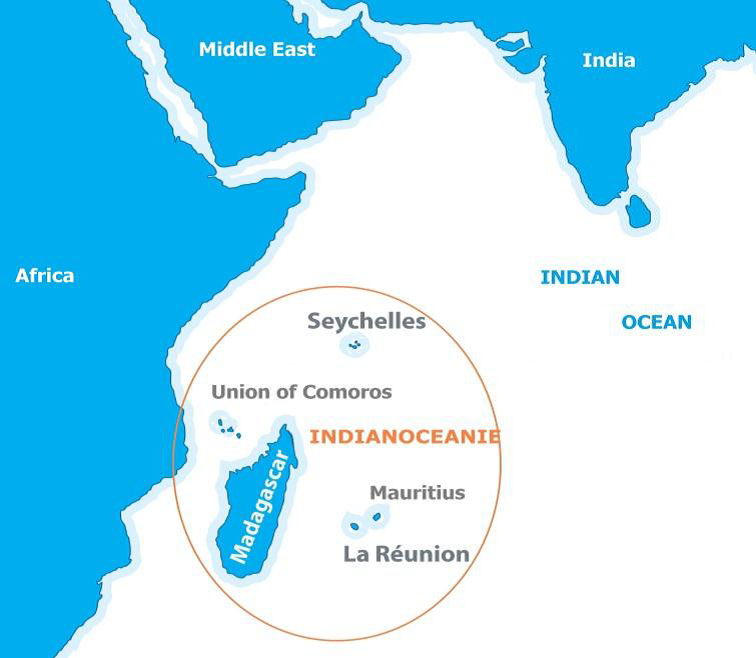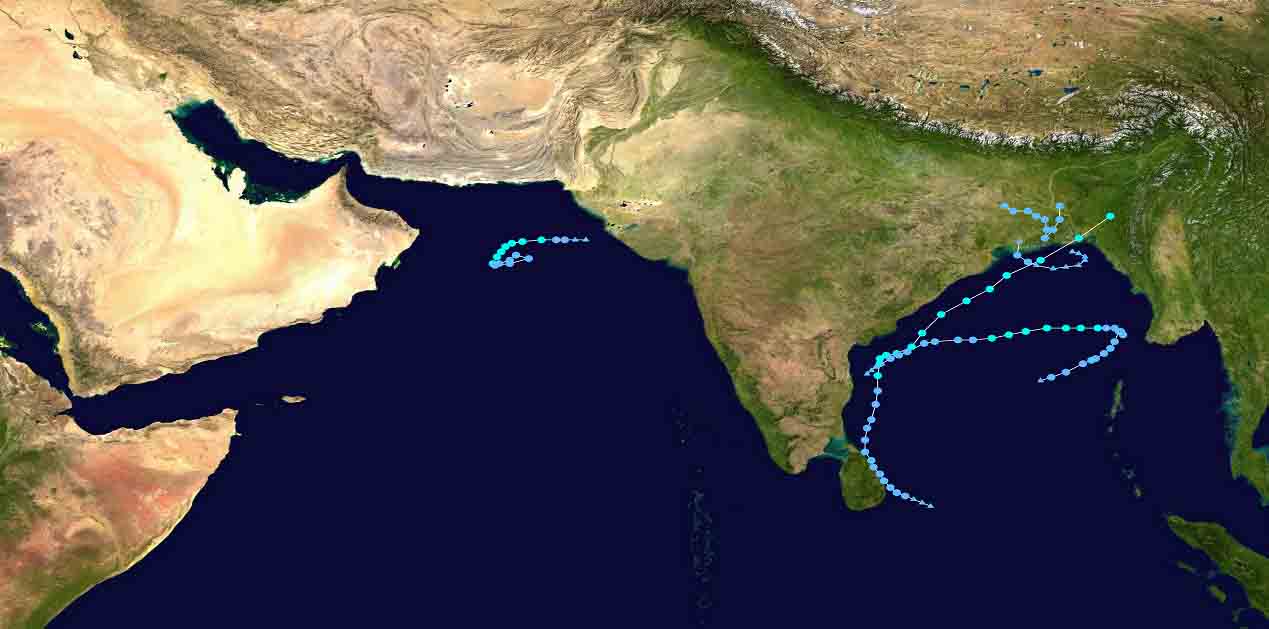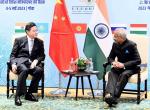Donald Trump’s exhortation for European Union (EU) to do more for their own security, coupled with ‘Brexit’ has spurred the EU to review its security framework. This has been further convoluted by an assertive Russia and rising influence of China. Whilst Russia might serve as a strong unifying factor, China’s economic muscle exposes the divisiveness and fragility of the EU. A combination of these elements provided the justification for consolidating a Common Security and Defence Policy (CSDP) in June 2016. Consequently, the European Community kick-started the process of formulating its EU Global Strategy (EUGS) which led to the adoption of a ‘defence package’. These nascent developments have been indeed transformational, but a wee bit ambitious. The greatest challenge for the EU probably is to keep its own flocks together and to exact equitable contribution of resources from each of its members, which might be hard to come by. These internal contradictions within the EU eventually manifest itself as capability deficit, as EU spreads itself thin around the globe. In this backdrop, India is perceived by EU as the most potent partner for maritime security in the Indian Ocean Region (IOR), more specifically in the Western Indian Ocean (WIO) theatre.
Challenges and Prospects in West Indian Ocean (WIO)
Littorals of the WIO have been beset with non-traditional threats such as piracy, illegal fishing, trafficking and weapon smuggling. Piracy off Somalia has been a unifying factor that has resulted in a near constant presence of combined task force led by the US, EU-Naval Forces (EU-NAVFOR), Japanese, Chinese and Indian navies. However, the cause has been made tenuous by China with the deployment of disproportionate forces in the Indian Ocean. China has seized it as an opportunity to burnish its skills on expeditionary operations for prospective use in future. The Maritime Silk Road has further dotted the Indian Ocean with permanent Chinese influence. Thus Indian Ocean is being upended irreversibly into volatile waters, akin to the South and East China Sea. Whilst official discourses on land often appear reassuring, they utterly belie the rising tensions at sea. The two prominent regional forums, the Indian Ocean Rim Association (IORA) and Indian Ocean Naval Symposium (IONS) have made significant contributions in raising awareness and coalescing the efforts of IOR nations. However, these initiatives have been largely ineffective in reducing maritime crimes and geopolitical tensions. Thus the Western Indian Ocean affords immense potentials for security cooperation amongst stakeholders, including the EU.
Ability to control the oceans does not translate naturally into regional stability. It requires sustainable and inclusive growth of the region through empowerment. Whilst, the spawning strategic rivalries would require a more nuanced approach and long term trust building, non-traditional threats can be tackled by effective international cooperation and inter-agency coordination. Capacity building of littoral states through multi-sectoral approach can generate considerable local goodwill for India against strategic threats and build confidence amongst littorals in the IOR. It needs transparent and comprehensive strategy that combines military coordination with civilian aspects on legal, public outreach policies, investigations of financial flows etc. These social enterprises promise better results when strengths of all stake holders are pooled in through partnership and tend to engender better regional cooperation.
EU’s Maritime Security Policy in WIO
EU’s Security and Defence Implementation Plan (SDIP) is premised on three core priorities, viz. response to external crisis, building capacities of partners and protecting its citizens through external actions. However, internal mechanisms within the EU, such as the Permanent Structured Cooperation (PESCO) on defence are still evolving. Often it is difficult to locate the exact nodal authority dealing with issues within the EU. Notwithstanding, these organizational infirmities, EU has made remarkable progress in dealing with maritime security of WIO which has enabled EU to create considerable footprints in East Africa. The multi-sectoral and comprehensive maritime security programs include the Maritime Security (MASE), EU Capability-building (EUCAP) Nestor in the Horn of Africa, EU Critical Maritime Routes Indian Ocean (EU CRIMARIO) and Djibouti Code. Few of these programs are on the verge of closing, but have left an indelible impression on East African littorals. The ongoing programs of EU in the WIO are as follows:
• The Djibouti Code of Conduct (DCOC) concerns repression of piracy and armed robbery against ships in the WIO and the Gulf of Aden. It was adopted on January 29, 2009 by Djibouti, Ethiopia, Kenya, Madagascar, Maldives, Seychelles, Somalia, the United Republic of Tanzania, Yemen, Comoros, Egypt, Eritrea, Jordan, Mauritius, Mozambique, Oman, Saudi Arabia, South Africa. DCOC has been amended by Jeddah Amendment in January, 2017 to include ‘blue economy’ for sustainable development. EU has played an active role in implementation of the Djibouti Code of Conduct (DCOC) as an ‘observer’ by facilitating the creation of the Information Sharing Centers (ISCs) in Yemen, Tanzania and Kenya as well as a Maritime Training Centre in Djibouti to enhance maritime security in the WIO.
• The EU program for promoting regional maritime security under the aegis of MASE ensures continuity and coordination between various civilian capacity building projects of the EU, including coordinated action on finance flows through Critical Maritime Routes Law Enforcement Agencies (CRIMLEA), inland economic development and governance projects. MASE provides a holistic approach to combating crime in East Africa.

• EU has been assisting the Indian Ocean Commission for operationalizing the Information Fusion Centre (IFC) in Madagascar and Regional Maritime Operational Coordination Centre (RMOCC) in Seychelles.
• EUCAP Nestor, headquartered at Mogadishu is a civilian mission that works exclusively for development and self sustenance of capacities in Somalia for maritime security. Community workshops, legal seminars and many more activities undertaken by the EU are helping in capacity building of the social community to combat security issues.
• EU CRIMARIO is a program launched by the EU for enhancing Maritime Domain Awareness (MDA) in the WIO. Under this program EU would set up two IFCs, one each in the North and South Indian Ocean.
Indian Ocean Commission

Indian Ocean Commission (IOC) was conceptualised in 1982 to harness the collective strengths of its member countries - Comoros, France / Reunion, Madagascar, Mauritius and Seychelles and facilitate their integration into the global economy by pooling resources and sharing knowledge and technologies. The countries of Indian-oceanic region geographically stand at the crossroads of Sea Lanes of Communications (SLOC) between Asia and Africa. Since its creation 30 years ago, IOC had primarily focused in the areas of diplomacy, trade, environment and human development. However, at the turn of the millennium, security and infrastructure development have also emerged as constituents of regional integration. In order to transform into a regional transshipment hub, IOC has adopted a comprehensive approach through port modernisation, security of sea lanes and setting up of an efficient regional maritime feeder system. Interestingly, these aspirations of IOC align well with China’s strategic aims in the IOR. China has demonstrated the nimbleness to snatch the initiative for developing ports, roads and digital connectivity in these island states. Seychelles has been the greatest beneficiary of Chinese endowments in terms of infrastructure and maritime patrol ship. Thus, China has not only succeeded in establishing a strategic bridgehead in the region, but also managed to drive a wedge in IOC’s regional cohesion, as it has done in EU and ASEAN. These are indeed ominous developments for France and India, being resident states of the IOR.
India – France Cooperation
France has the unique distinction of being a member of both the EU and the Indian Ocean. Thus it enjoys the plentitude of EU’s economic resources as also the strategic locale of the IOC. India’s relationship with France goes back many decades, especially in defence cooperation. Indian Armed Forces have benefitted from acquisition of front line equipment in the past and bilateral cooperation in Defence have congealed over the years. The ‘Varuna’ naval exercise forms the fulcrum of France–India strategic relationship along with other constituents of defence cooperation. The partnership has been consistent even in the past under the rubric of ‘India France Partnership for Future – 2010’. A first-ever bilateral dialogue on Maritime Security of the IOR was held in January 2016, which paved the way for enhanced cooperation on maintaining the safety of sea-lanes for trade and communications, countering the threat of piracy and maritime terrorism, maritime domain awareness and fostering trade and economic links in the IOR.
Partnership between India and France was further strengthened by the Government of India by hosting the French President as the Chief Guest at India's 67th Republic Day Celebrations in 2016. It was the fifth time that a French Head of State was invited as the Chief Guest on India's Republic Day celebrations, making France the country that has been extended this honour the highest number of times so far. Developing security infrastructure with France in WIO countries could enhance mutual support during peace, crisis and conflict.
India – EU Cooperation
The evolution of EU - India relationship from the 1960s to 2004 resided primarily in the realms of economic and commercial ties, taking into consideration the fact that the EU is a customs-union. Pursuant to the initiation of EU-India Strategic Partnership in 2004, these relationship moved beyond economics to encompass co-operation on security. A change in leadership in India in 2014 provided further fillip to security cooperation with the EU and led to the adoption of ‘Agenda for Action 2020’ during the Brussels Summit in 2016. This extended the security policy into the domain of maritime co-operation. Consequently, EU Naval Force and the Indian Naval ships engaged in joint manoeuvres (PASSEX) off the coast of Somalia in October 2017 after a long hiatus, thus rekindling the convergence and interoperability that already existed. Aspects of maritime security in the IOR have been further emphasised during the 14th Annual Summit between India and the EU held in New Delhi on October 06, 2017. Terrorism, freedom of navigation, over flight and security of the global commons – sea lanes, cyber space and outer space - were also reiterated during the summit. EU and India have resolved to comply by the norms of International Law, notably the United Nations Convention on the Law of the Sea (UNCLOS) 1982 to address disputes at sea, contrary to insolent and hegemonic approach adopted by some nouveau regional powers.
As aforesaid, EU and France boast of substantial footprints in the WIO. Fortuitously, the complementarity of Indian and EU’s approach towards maritime security provides the perfect recipe for close cooperation between the two. By synthesising their capacities in the WIO, EU and India could emerge as the bellwether for net security in the IOR. However, India would also have to walk the talk and resort to a more nuanced approach in the region that is multi-sectoral, boosts regional cooperation, enhances regional institutions and aggregates civilian and military capabilities.
Proposed Approach for India in WIO
Due to her geographical location in the IOR, India enjoys significant flexibility in shaping the operations and calibrating its response, whilst retaining her strategic neutrality. India has been a benevolent force in the IOR with immense capacity to respond to the traditional and non-traditional crisis. This has been amply demonstrated during a multitude of occasions in the past, operations Cactus in Maldives (1988), intervention in Sri Lanka (1987), Tsunami (2004), Op Rahaat (2015) for evacuation from Yemen, to name a few. Whilst Indian Navy, shipping and airlines may be able to provide succor to its own nationals, other countries in the IOR have great expectations from India and look up to India for assistance, especially during a crisis. Hence, India’s response would have to be commensurate with its own percept as a net security provider. In this regard, collaboration with partners such as the EU can help plug the voids to deal with a large region such as the IOR.
On the matters of maritime security there are opportunities for cooperation between India and EU. At the tactical level the nuts and bolts of operational employment are compatible due to the existing interoperability and standard operating procedures (SOP) built over the past years. The difficulty though is in the incongruity of approach towards the governance on regional security. Under these conditions, a synergetic approach with the EU could assure greater promises for success. Hence it would be prudent for EU and India to aligning their organisations and SOPs to the extent feasible. The measures that could enhance India’s stature as a net security provider in the WIO are as follows: -
• Join the International Maritime Agreement (IMO) led Djibouti Code as an ‘observer’ and participate in capacity building of the Information Sharing Centers (ISCs) and training.
• Enhance the capacity of WIO counties for combating marine crimes (trafficking, illegal fishing, piracy etc.) in line with the EU CRIMLEA program under the aegis of MASE program.
• Engage with the Somalian society through civilian initiatives like the EUCAP Nestor program to empower them for sustainable maritime security. Community workshops, legal seminars can help capacity building of the social community to combat security issues. This will also help deeper linkages with the Somalian security and government organisation.
• Sign white shipping MoU with the CRIMARIO program launched by the EU for enhancing Maritime Domain Awareness (MDA) in the WIO.
• Provide technical assistance to IOC led Information Fusion Center (IFC) in Madagascar and a Regional Maritime Operational Coordination Centre (RMOCC) in Seychelles.
• Develop joint infrastructure with France in WIO countries for mutual support during peace, crisis and conflict. Continuation of exercises Varuna by the Navies and Shakti by the Armies will facilitate review of SOPs and interoperability.
Conclusion
Although India and the EU have been strategic partners for over a decade, not much headway has been made, despite the existence of ample scope for cooperation. Ability to control the oceans does not translate naturally into regional stability. Therefore, India’s desire to become a net security provider in the IOR cannot be military centric. As a preeminent power in the Indian Ocean, India needs to involve proactively in civilian components of capacity building in East Africa, just as it has done in Afghanistan. A holistic and transparent approach will improve governance on regional security in the WIO and indeed ensure long-term stability in the IOR. Cooperation with EU could enable India to achieve speedy penetration into the African security system, instead of starting ab initio. In this respect, EU’s financial muscle and existing footprints in the IOR provide immense opportunities for India to emerge as a net security provider in the WIO.
(Views expressed are of the author and do not necessarily reflect the views of the VIF)
Image Source:http://www.wikiwand.com/en/2016_North_Indian_Ocean_cyclone_season











Post new comment